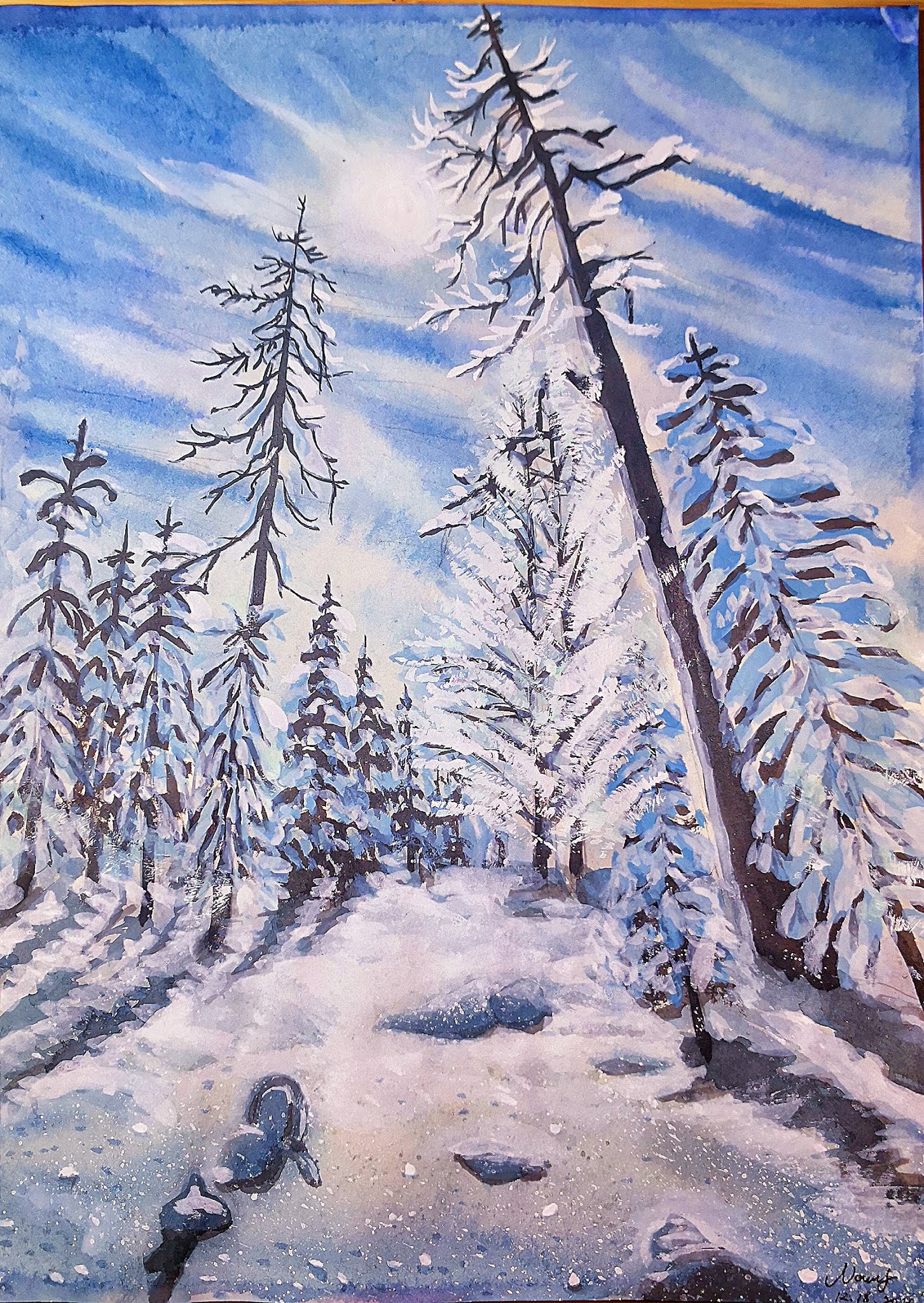Winter drawing is an enchanting art form that captures the serene beauty of the coldest season. Whether you're an aspiring artist or a seasoned professional, understanding the nuances of winter drawing can significantly elevate your artistic skills. In this article, we will explore various techniques, tips, and inspiration to help you create stunning winter-themed artwork.
The chill in the air and the soft blanket of snow provide a unique backdrop for artists. From the intricate details of frost-covered branches to the warm glow of a cozy cabin, winter offers a plethora of subjects for drawing enthusiasts. This guide will delve into the essential aspects of winter drawing, ensuring you are well-equipped to tackle your next masterpiece.
Throughout this article, we will emphasize key concepts and share expert insights to enhance your understanding of winter drawing. Our aim is to provide you with valuable resources and techniques that not only inspire creativity but also foster a sense of confidence in your artistic abilities.
Table of Contents
- Biography of Winter Drawing
- Essential Techniques for Winter Drawing
- Choosing the Right Materials
- Finding Inspiration for Winter Drawings
- The Art of Sketching Winter Scenes
- Understanding Color Theory in Winter Art
- Advanced Winter Drawing Techniques
- Conclusion
Biography of Winter Drawing
Winter drawing, as an art form, has evolved over centuries. Artists have been inspired by the beauty and tranquility of winter landscapes, creating works that resonate with viewers on an emotional level. The cold season brings a unique perspective to nature, and many renowned artists have dedicated their careers to capturing its essence.
Data and Personal Background
| Artist Name | Nationality | Famous Work | Year |
|---|---|---|---|
| Caspar David Friedrich | German | The Sea of Ice | 1824 |
| Claude Monet | French | Snow Effect, Morning | 1893 |
| John Constable | British | Snow Scene | 1828 |
Essential Techniques for Winter Drawing
Mastering winter drawing requires a blend of observation and technique. Here are some fundamental techniques that can help enhance your artwork:
- Observation: Spend time observing winter scenes and take note of the unique characteristics of light and shadow.
- Layering: Use layering techniques to create depth in your drawings, mimicking the layering of snow and ice.
- Contrast: Utilize high contrast between dark branches and bright snow to create visually striking compositions.
Choosing the Right Materials
Your choice of materials can significantly impact the quality of your winter drawings. Here are some recommended materials:
- Pencils: Use a range of graphite pencils for different shading effects.
- Colored Pencils: Opt for high-quality colored pencils for vibrant winter scenes.
- Paper: Choose textured paper to capture the fine details of winter landscapes.
Finding Inspiration for Winter Drawings
Inspiration can be found in various places. Here are some tips to spark your creativity:
- Nature Walks: Take walks in winter landscapes to observe and sketch.
- Photography: Use photographs as references for your drawings.
- Art Galleries: Visit galleries to explore winter-themed artworks by other artists.
The Art of Sketching Winter Scenes
Sketching is an integral part of the drawing process. Here are some tips for sketching winter scenes:
- Start with Simple Shapes: Break down complex scenes into basic shapes.
- Focus on Composition: Consider the placement of elements within your sketch.
- Use Quick Sketches: Practice quick sketches to capture the essence of winter landscapes.
Understanding Color Theory in Winter Art
Color theory plays a crucial role in winter drawing. Here are some key points to consider:
- Cool Colors: Use cool colors like blues and purples to depict the chill of winter.
- Warm Accents: Incorporate warm colors to create focal points in your artwork.
- Monochromatic Schemes: Experiment with monochromatic color schemes for a cohesive look.
Advanced Winter Drawing Techniques
For those looking to take their winter drawing skills to the next level, consider these advanced techniques:
- Mixed Media: Combine different mediums for unique textures and effects.
- Digital Art: Explore digital platforms for winter-themed illustrations.
- Experimentation: Don’t be afraid to experiment with unconventional techniques.
Conclusion
In summary, winter drawing is a captivating art form that allows artists to express their creativity through the beauty of the season. By mastering essential techniques, selecting the right materials, and finding inspiration, you can create stunning winter-themed artwork. We encourage you to practice regularly and share your creations with others.
If you enjoyed this article, please leave a comment below, share it on social media, or explore more of our content for additional artistic inspiration. Happy drawing!
Penutup
Thank you for taking the time to read our comprehensive guide on winter drawing! We hope you found it informative and inspiring. Be sure to visit us again for more tips, techniques, and artistic insights that will help you on your creative journey.


